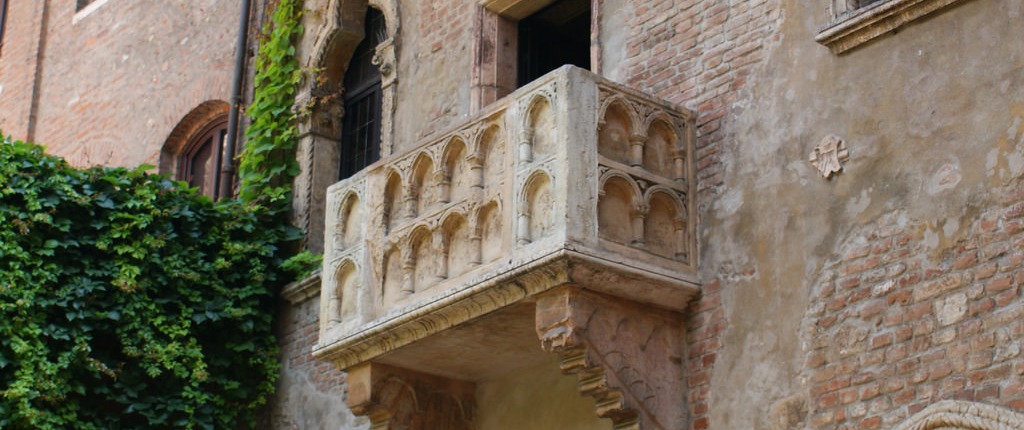Verona is considered one of the most beautiful and elegant Italian cities: it was called “the gateway to Italy” by those who came from the North into the Belpaese, anticipating its infinite beauty.
Just consider that Verona has such a historical and artistic heritage that its historic center has been declared a UNESCO World Heritage Site: it’s not surprising that Shakespeare chose Verona as a setting for his most famous tragedy “Romeo and Juliet”.
The symbols of Verona: Juliet and the Arena
To start discovering Verona, begin from the elegant Piazza Bra which welcomes the citizens during their meetings and walks with its pink marble liston appreciated by Goethe himself. Before your eyes stands the imposing Arena di Verona, built in Valpolicella stone and brick: it can hold about 20,000 spectators who in the past witnessed bloody fights between gladiators, but today can enjoy lyrical concerts such as the “Festival Opera “.
Taking the lively Via Mazzini, full of clubs and boutiques, proceed until you cross Via Cappello where, beyond a Gothic arch, you will find yourself in the courtyard of Juliet’s house. After a look at the inevitable dedications of love left on the walls, look up to see the iconic balcony where Romeo, according to legend, climbed to kiss his beloved. Touch the left breast of the bronze statue of Juliet and visit the interior of the thirteenth century house.
The picturesque Piazza delle Erbe
Returning to Via Mazzini, you will reach the spectacular Piazza delle Erbe. Many important buildings face this ancient jewel such as the baroque Palazzo Maffei you can easily distinguish by the external statues of Greek gods, the frescoed houses and the Palazzo della Ragione: visiting the latter you can appreciate internally the courtyard of the Old Market with the Gothic staircase.
Among the bars where you can stop to sip a prosecco and colorful stalls, you can find the fourteenth-century Fountain of the Madonna of Verona and the Capitello: the latter is a marble canopy where in the past the governors talked to the crowd or where they exposed the heads of the beheaded.
The square is located in the shadow of the Torre dei Lamberti dating back to the 12th century: it is more than 80 meters high and, as you can notice, was built using various materials, from bricks to tuff.
Verona between legend and history
From the Piazza delle Erbe the Arco della Costa opens: as you enter it, you observe the whale rib that according to the legend has been hanging since the seventeenth century; it is said that the bone will fall only when it is passed by a good-hearted person.
Beyond the arch, Piazza dei Signori opens up before you, the old administrative and political center of the city: in the center is the statue of Dante who took refuge in Verona after having been exiled from Florence. After a look at the Palazzo del Capitano with its corner tower, the Domus Nova and the Palazzo degli Scaligeri from the late 13th century, take Via Santa Maria in Chiavica where you can admire the Arche Scaligere.
It is a monumental cemetery where some members of the Scaligeri found a worthy burial: the most beautiful tombs, in Gothic style, are those of Mastino II, Cansignorio and Cangrande I who was the patron of Alighieri to whom the Paradise of the Divine Comedy was dedicated.
The power of the Scaligeri
Verona is crossed by the river Adige and among the bridges that dominate it stands out, with its crenellation and its red bricks, the beautiful Ponte Scaligero that gives its best especially at sunset. The bridge that appears to you today indestructible, supported on irregular arches and massive pylons, was destroyed during the Second World War: in the fifties it was rebuilt using the same original stones recovered following the explosion.
Not far away you will find Castelvecchio, a fortress erected by the will of Cangrande II della Scala: it consists of Piazza d’Arme with an extravagant fountain in the center in the shape of a dog, and the Palace surrounded by a double wall. In this sumptuous building you can visit the Civic Museum of Verona, where the “Female Portrait” by Rubens and “La Sacra Famiglia” by Mantegna are kept among others.




